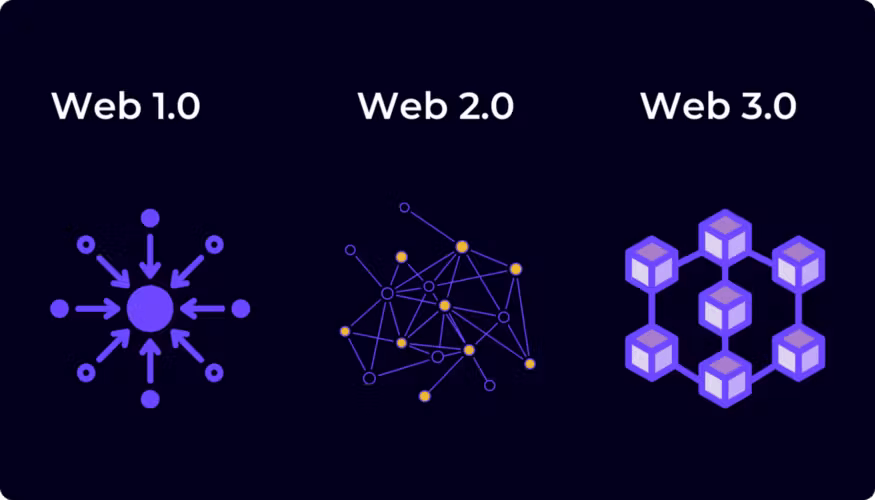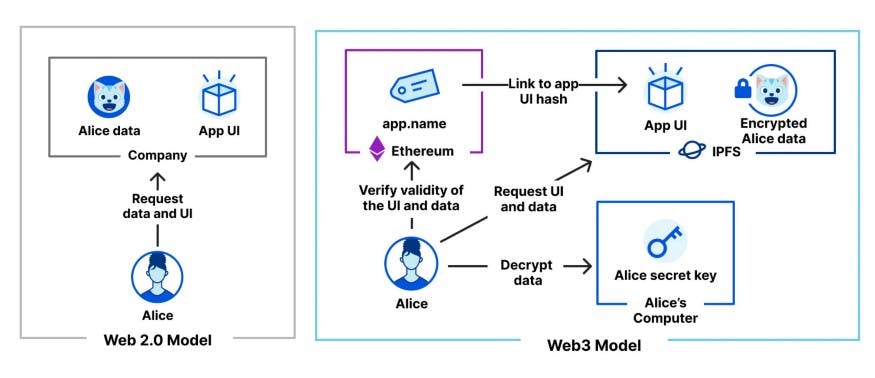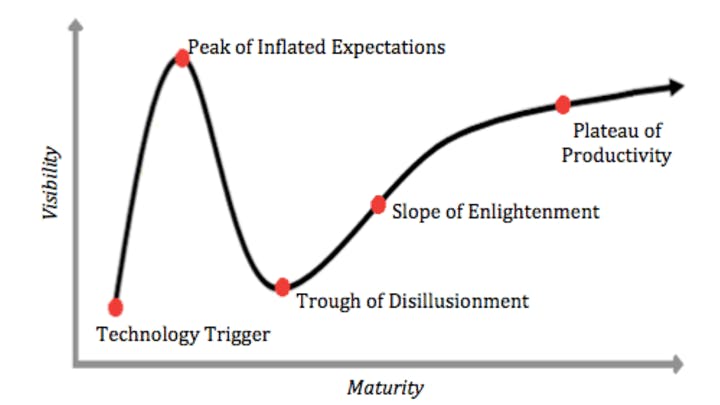

Chances are, you’ve heard the term “web3” many times.
Web3 startups have been raising mad funds, hiring like there’s no tomorrow and at this point even stealing tech talents from big techs! They’re appearing on social media and techcrunch more than any other web2-based startups.
So it all got me curious, super curious. I’ve spent several months looking into this space, and I’ve seen its growth. It’s moving really fast.
And before I even know it, I’ve gone deep into this Web3 rabbit hole.
Disclaimer: I’m by no means a web3 expert. If there is anything unclear or technically inaccurate, please let me know!
Before we get into web3, though, let’s quickly go over what web 1.0 and web 2.0 are. That’ll give us a bit more context.
Web 1.0 refers to the earliest stage of the world wide web. It mostly consisted of static pages that ran on ISP-hosted web servers or on free web hosting services.
What does that mean? It means it was a system in which most internet content and assets were created by people who were hosting it.
Static means it’s not interactive or dynamic like most websites you see today. It’s mostly just HTML and CSS, allowing visitors to just browse content, and all customisation is solely done by the owner of the website.
So think about newspaper websites, personal blogs and other things like that. The companies or people that create the content, also host the websites.
Most of the websites compiled here in this link would most likely fit in this category.
Then came web 2.0. This is a newer system in which much of the content on the internet is created by users, but they’re hosted by companies.
For example, on Linkedin, users create and upload photos, texts and videos to Linkedin. However, they’re hosted by Linkedin. They’re ‘owned’ by Linkedin.
Web 2.0 was the major step up from1.0 that changed how the world saw the internet. It became more widespread as it offered various information, user-to-user interaction, content creation, and blogging. Tim Berners-Lee coined the World Wide Web as sites, and social media applications became widespread.
Pretty much most of the web apps we see today, falls in the Web2.0 category. That’s what Full Stack Developers work on and what helps them demand such high salaries today.
Web 2.0 is mostly criticised by the Web3.0 fanclubs for a few reasons.
For the most part, users don’t get to make money even though they supply lots of content to the service providers. For example, Youtube is worth multiple orders of magnitude more than the highest paid content creator (Youtuber). In fact, they are worth more than all youtube creators combined. Another example, Facebook users don’t get paid for posting stuff on Facebook, but Facebook itself makes money by selling advertisements.
In summary, Web 2.0 is controlled by a few large companies, and this gives them the ability to remove or censor content they don’t like.
Web3, some argue, is the next step in this evolution of the internet. It strives to create a dutiful and data-driven interface and cater to every individual who uses the platform. It is meant to use blockchains, 3D graphics, metaverse, and the Semantic Web.
It’s characterized by how.

Major difference between Web 2.0 and web3. Diagram by Preethi Kasireddy

Web 2.0 vs web3 diagram by cloudflare. The idea is that the app, the storage are resided in block chain owned by no one and the data is locked cryptographically
Web2.0 works with some Frontend tech like HTML, CSS, Javascript, Vuejs, along with some Backend tech like Express.js, Postgresql, AWS to build full-stack web applications. Like Airbnb, Facebook, Reddit etc. Knowing the few tech above will allow you to literally build any Web2 startups today.
Web3.0 works with the same Web2.0 technologies above, but with some extra stuff:
The current state of web or Web 2.0 is where the entire internet has been organized and controlled by a few Silicon Valley internet companies.
It’s true. Most of the web traffic went to FAANG (Facebook, Apple, Amazon, Netflix and Google) companies. So with technology that is derived from cryptocurrency and block chain, the idea is that you can have a decentralized network of servers that serve you the data and allows you to conduct transactions securely.

Right now, web3 is climbing the first peak of hype. Which way will it go? Overcome the peak or tumble down into the graveyard?
The Web3 movement is generating a lot of buzz right now, in early 2022. While there have been promises of a web3 chat app, email service, and other things, it has not yet become ubiquitous. Web3 is now climbing the first mountain in the Gartner Hype Cycle Graph. So, at this point, web3 will either climb the hype mountain or fall into the abyss of forgotten technology.
What do you think?
That’s all for today!
Thanks for reading till the end
If you like what you’re seeing and connect with my vision, join me at Sigma School, we’re at the forefront of this journey to innovate, rethink and reinvent the way education is done.
Here’s to redefining education. Cheers!
Email us directly at hello@sigmaschool.co!
Want to learn to find out more about what we do?
Learn more here: https://sigmaschool.co
Let’s get social! Find us on:
Facebook: https://www.facebook.com/joinsigma/
Instagram: https://www.instagram.com/joinsigma/
Linkedin: https://linkedin.com/company/79085028/